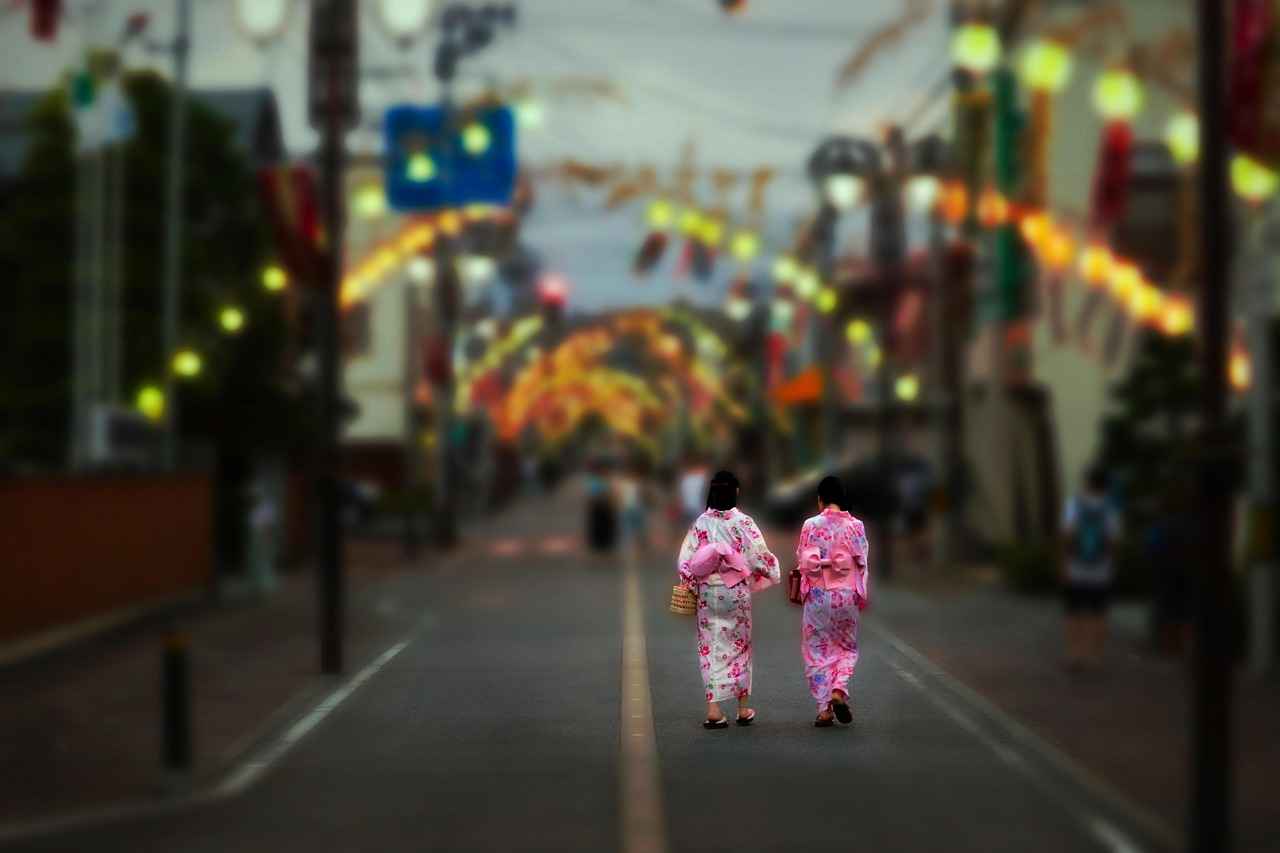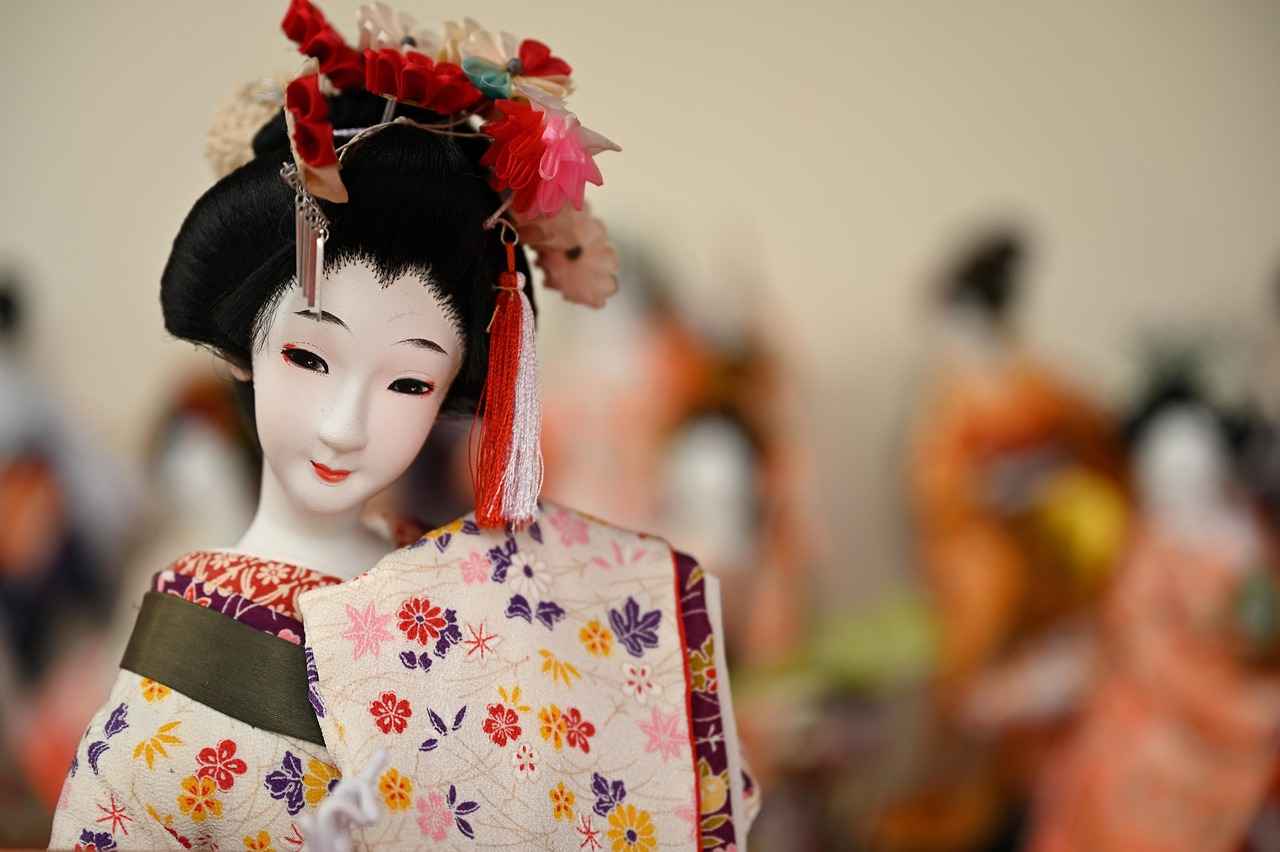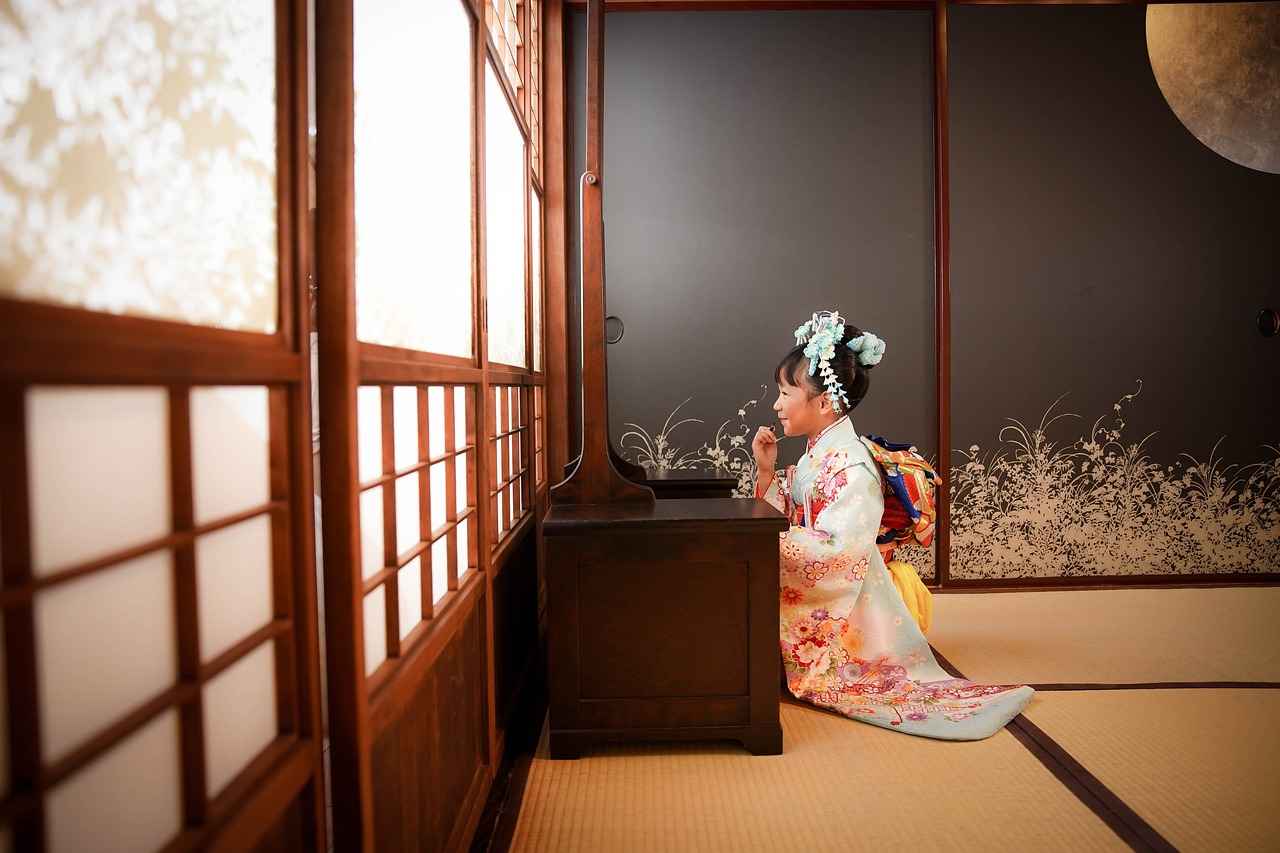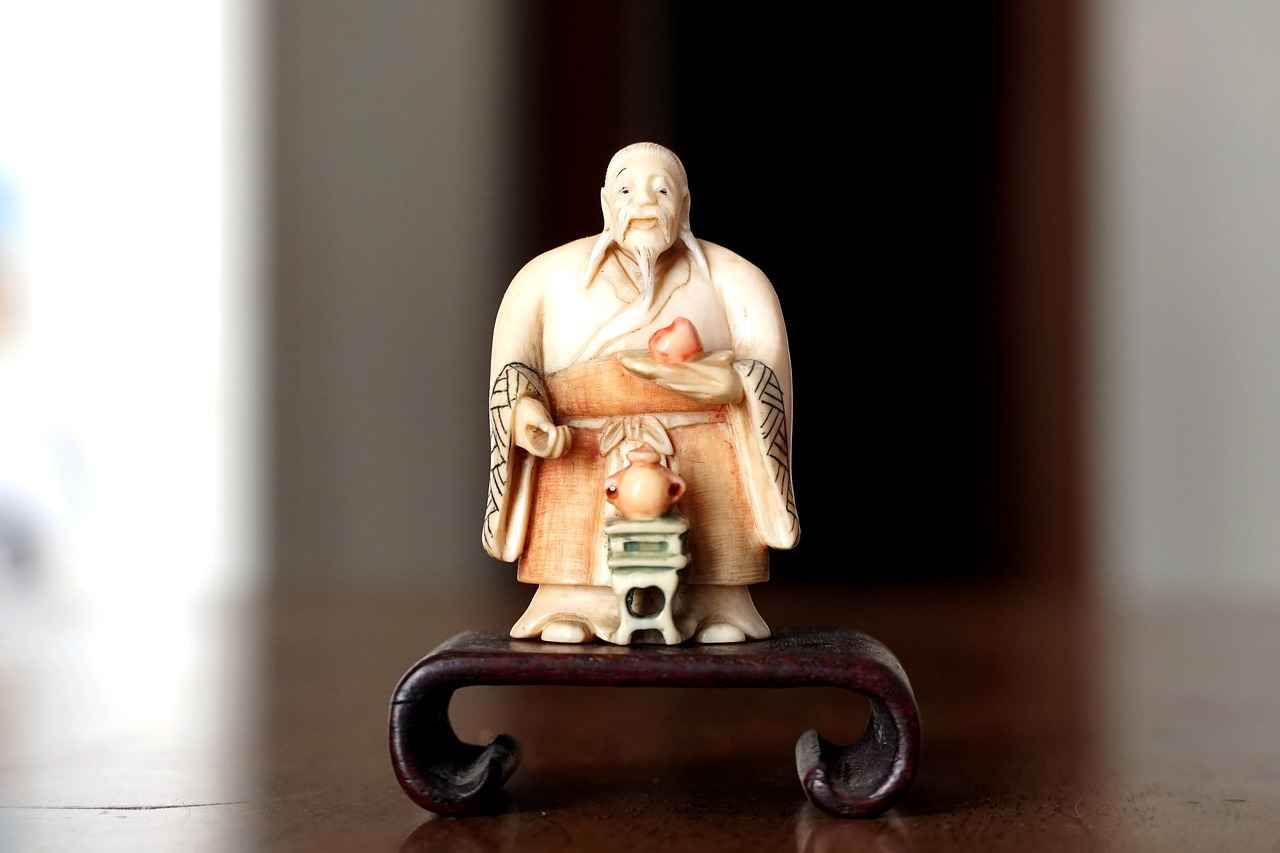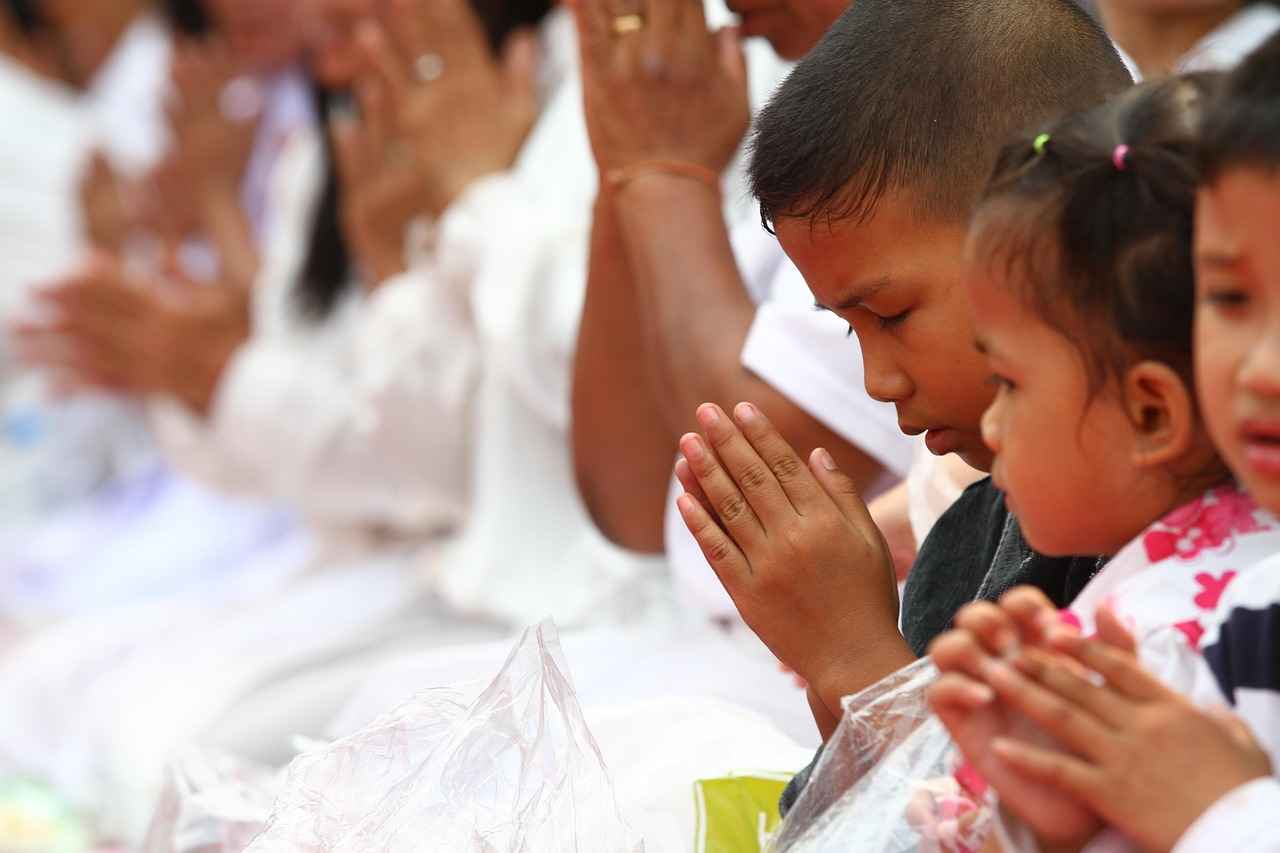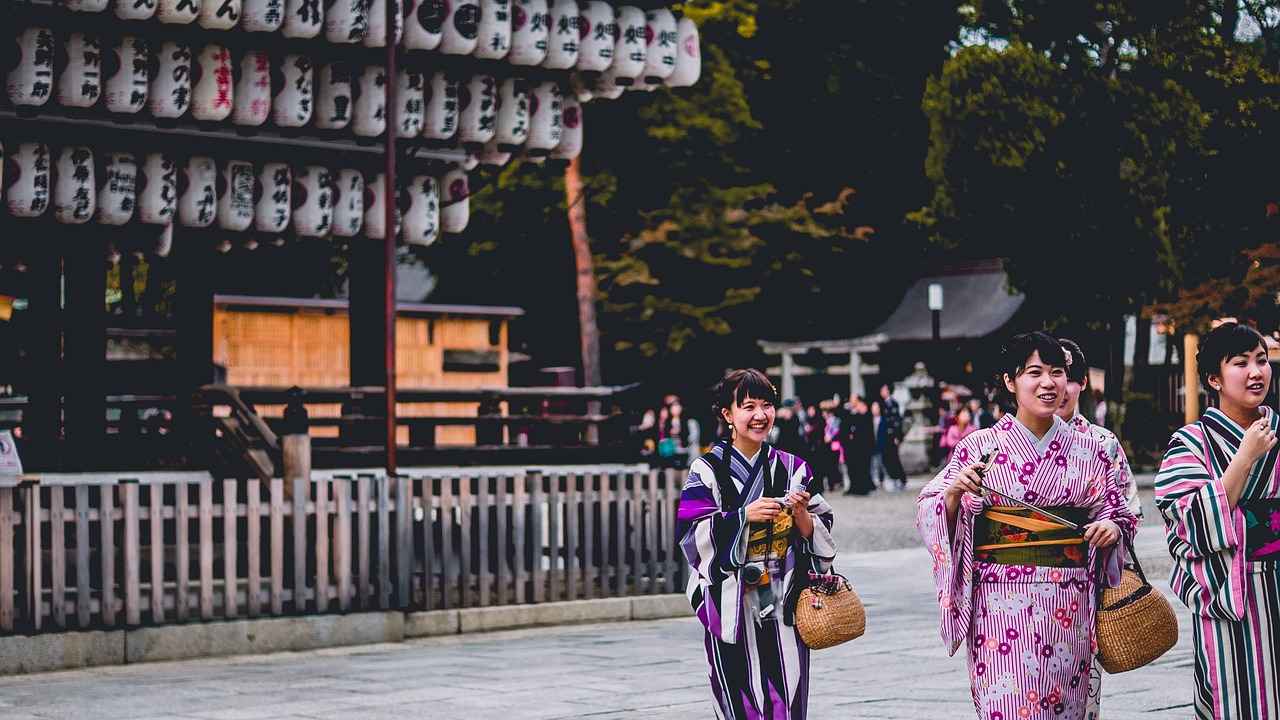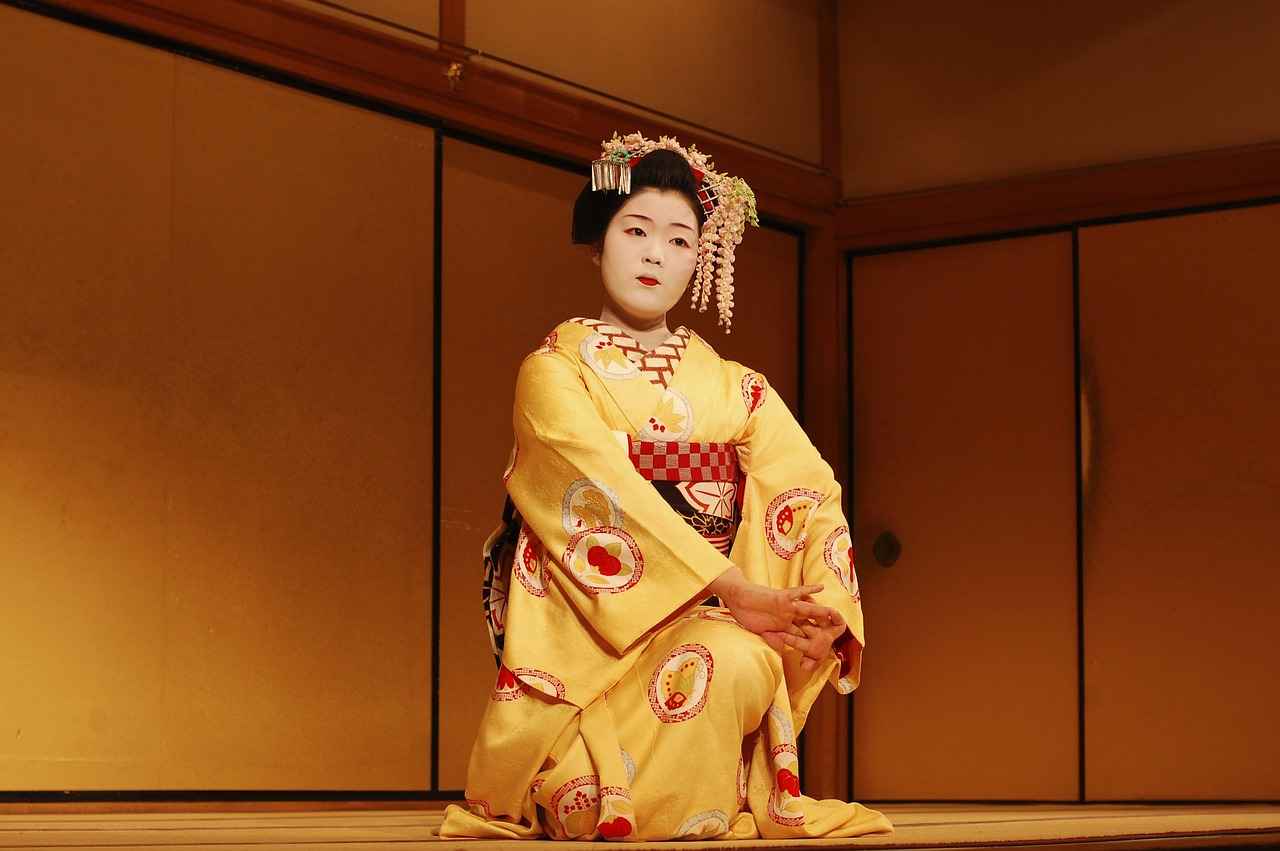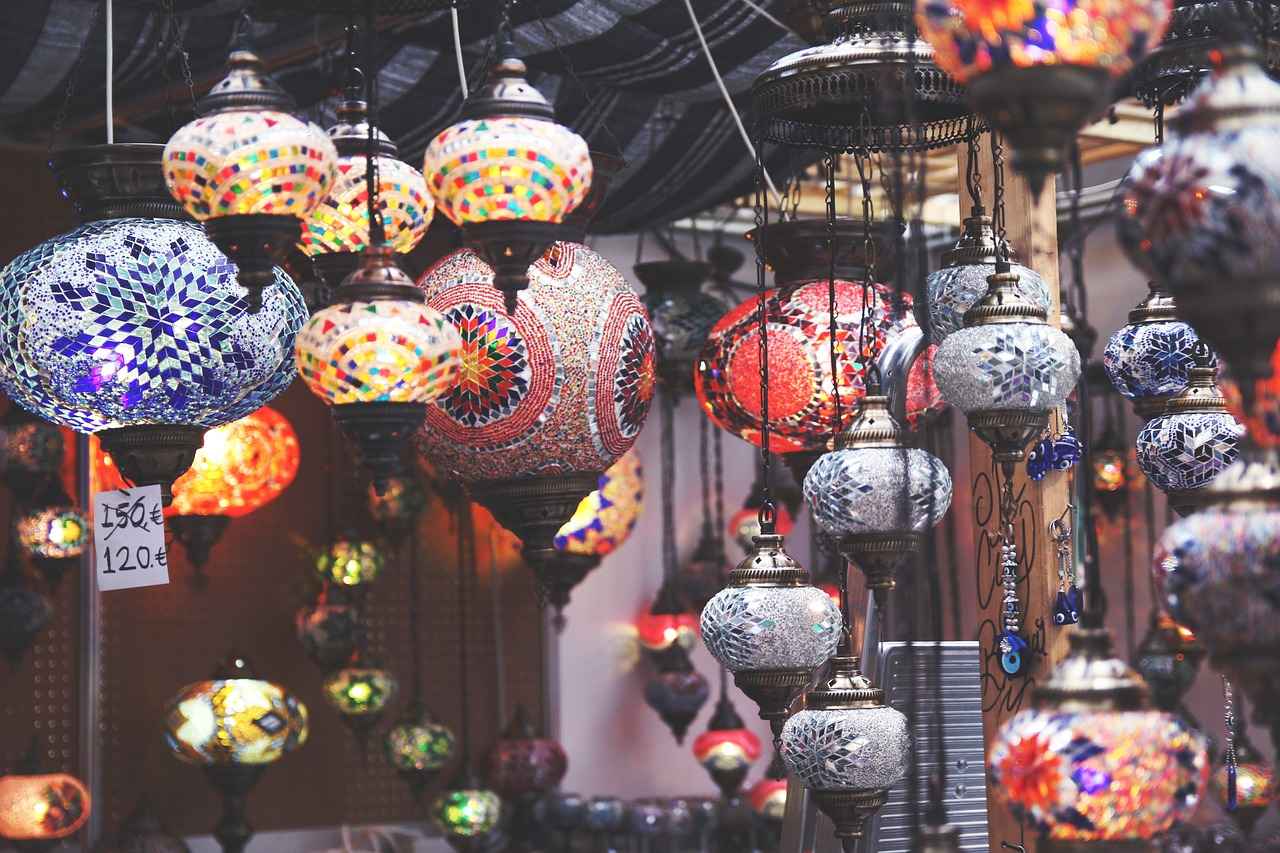This guide provides an in-depth look into purchasing your first kimono, exploring various styles, fabrics, sizing, and cultural significance to ensure an informed and enjoyable buying experience.
Understanding the Kimono
A kimono is a traditional Japanese garment known for its long sleeves and wrap-around design. To truly appreciate this beautiful attire, it’s essential to understand its rich history and cultural significance.
Types of Kimonos
There are several styles of kimonos suited for different occasions, ranging from formal to casual wear. Familiarizing yourself with these types will help you select the perfect kimono for your needs.
- Formal Kimonos: Worn during special occasions, these kimonos, such as the furisode and tomesode, are typically made from luxurious fabrics and feature intricate designs.
- Casual Kimonos: Designed for everyday wear, casual kimonos like the yukata and hifu offer comfort and style for festivals and casual outings.
Choosing the Right Fabric
Kimono fabrics range from silk to cotton, each offering unique qualities. Understanding these materials is crucial for selecting a kimono that suits your style and comfort.
- Silk Kimonos: Known for their softness and sheen, silk kimonos are luxurious but require special care.
- Cotton Kimonos: Lightweight and breathable, cotton kimonos are perfect for warm weather and casual wear.
Finding the Right Size
Selecting the correct size is vital for comfort and appearance. Measure your height, bust, and waist to ensure a proper fit. Refer to size charts provided by retailers, as sizes can vary.
Accessorizing Your Kimono
Accessories enhance the beauty and cultural significance of your kimono. The obi belt secures the kimono, while traditional footwear like geta or zori completes the look.
Where to Buy Your Kimono
Shopping for a kimono can be done at local boutiques or online retailers. Local shops allow you to experience the fabric and fit firsthand, while online shopping offers convenience and variety.
Caring for Your Kimono
Proper care is crucial for maintaining your kimono’s beauty and longevity. Depending on the fabric, kimonos may require dry cleaning or gentle hand washing. Store your kimono in a breathable garment bag to prevent damage.
Conclusion: Embracing the Kimono Culture
Purchasing your first kimono is not merely a fashion choice; it is a way to embrace a rich cultural heritage. With this guide, you can confidently select, wear, and care for your kimono, celebrating its beauty and significance.
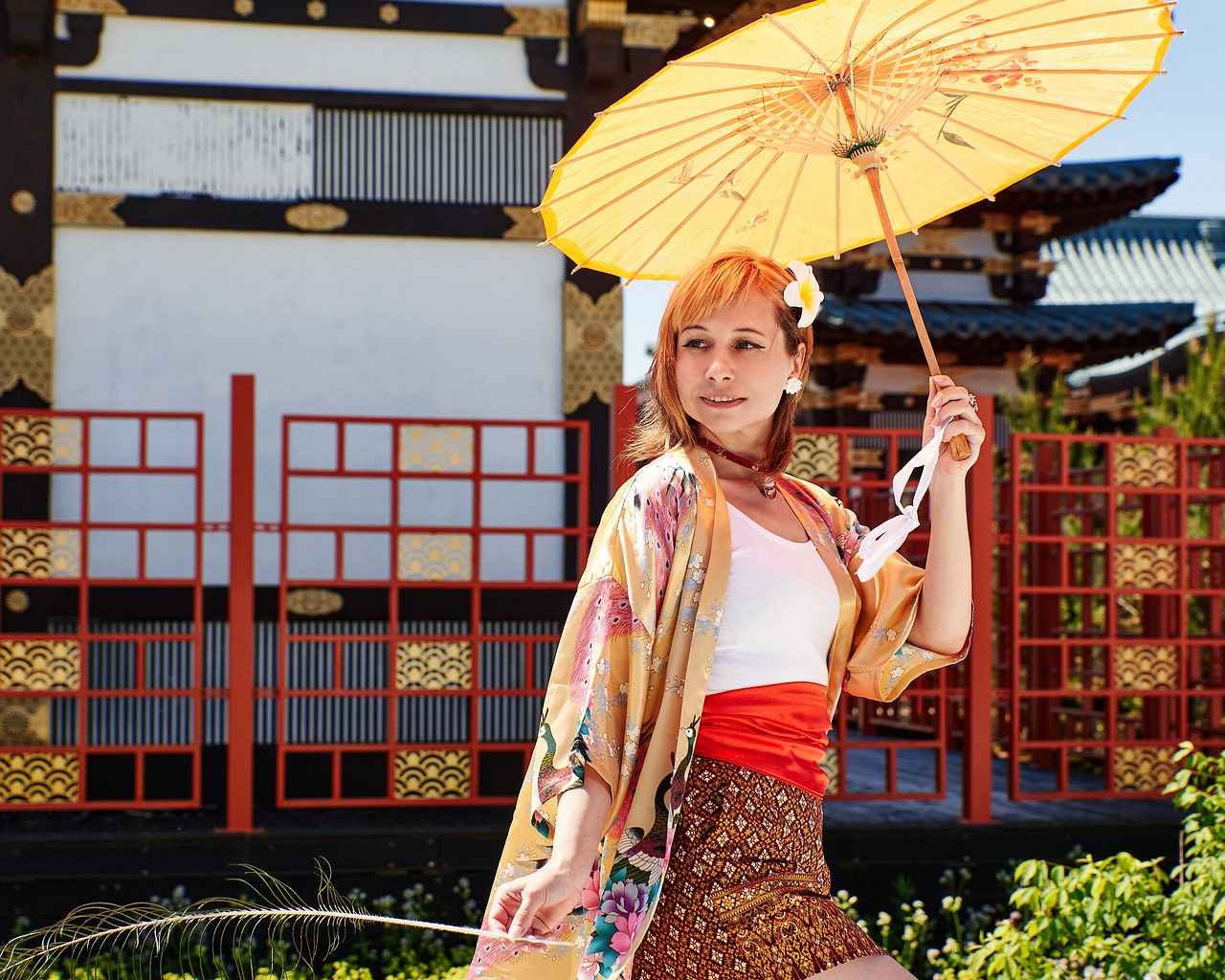
Understanding the Kimono
A kimono is a traditional Japanese garment that is not only a piece of clothing but a symbol of Japan’s rich cultural heritage. Characterized by its long sleeves and a unique wrap-around design, this elegant attire has a history that dates back to the Heian period (794-1185). The kimono is often made from luxurious fabrics, such as silk, and features intricate patterns that can represent various themes, including nature, seasons, and family crests.
The significance of the kimono extends beyond its aesthetic appeal. It is deeply embedded in Japanese customs and rituals. For instance, different styles of kimonos are worn during specific occasions, such as weddings, festivals, and tea ceremonies. Understanding the cultural context of the kimono can enhance one’s appreciation for this beautiful garment.
In contemporary Japan, while western clothing is prevalent, the kimono still holds a special place in society. It is worn during traditional events and festivals, allowing individuals to connect with their heritage. Additionally, the kimono has gained popularity outside Japan, with many fashion enthusiasts embracing its beauty and versatility.
To truly appreciate the kimono, one must also consider the craftsmanship involved in its creation. From the dyeing techniques to the stitching, each kimono is a work of art that reflects the skill and dedication of artisans. This attention to detail not only preserves tradition but also ensures that every kimono tells a unique story.
In conclusion, the kimono is more than just clothing; it is a cultural artifact that embodies the spirit of Japan. By understanding its history and significance, one can fully appreciate the beauty and elegance that this traditional garment represents.

Types of Kimonos
Kimonos are a beautiful representation of Japanese culture, and they come in various styles that cater to different occasions and personal preferences. Understanding the different types of kimonos is essential for making an informed choice that aligns with your needs. Here, we explore the various categories of kimonos, ensuring you find the perfect one for any event.
- Formal Kimonos
- Furisode: This long-sleeved kimono is traditionally worn by young, unmarried women. It is often vibrant and adorned with intricate patterns, making it a popular choice for celebrations and formal events.
- Tomesode: Typically worn by married women, tomesode kimonos have shorter sleeves and are often embellished with elegant designs. They are ideal for weddings and other significant ceremonies.
- Casual Kimonos
- Yukata: A lightweight cotton kimono, the yukata is perfect for summer festivals and casual outings. It is comfortable and easy to maintain, making it a favorite among many.
- Hifu: This type of kimono is designed for everyday wear and offers a more relaxed fit. It is often made from breathable fabrics, ensuring comfort during casual events.
- Seasonal Kimonos
- Jinbei: Primarily worn in the summer, jinbei consists of a top and shorts made of light fabric. It is ideal for warm weather and casual gatherings.
- Shitagi: A traditional undergarment worn beneath other kimonos, shitagi is essential for layering and adds comfort to the overall outfit.
Choosing the right kimono style is crucial for expressing your personality and cultural appreciation. Whether you opt for a formal or casual kimono, each style holds a unique charm and significance that enhances your wardrobe.
Formal Kimonos
hold a significant place in Japanese culture, often reserved for special occasions such as weddings, tea ceremonies, and formal gatherings. These garments are not just clothing; they are a reflection of tradition, artistry, and social status, making them a vital part of Japanese heritage.
The most recognized types of formal kimonos include the furisode and the tomesode. Each of these kimonos features distinct characteristics that cater to different demographics and occasions.
| Kimono Type | Target Audience | Features |
|---|---|---|
| Furisode | Young Unmarried Women | Long sleeves, vibrant colors, intricate patterns |
| Tomesode | Married Women | Shorter sleeves, elegant designs, often with a dark background |
The furisode is particularly notable for its long, flowing sleeves, symbolizing youth and unmarried status. Its vibrant colors and elaborate patterns make it a popular choice for celebratory events. Typically worn by young women, the furisode often features designs that represent good fortune and happiness, making it ideal for weddings and formal festivities.
On the other hand, the tomesode is worn by married women and is characterized by its shorter sleeves and sophisticated patterns. This kimono is often adorned with subtle, elegant designs that convey a sense of maturity and grace. The tomesode is typically worn during significant ceremonies, such as weddings, where it complements the attire of the bride and adds to the overall aesthetic of the event.
Both styles are crafted from luxurious fabrics, including silk, which enhances their beauty and ensures they are suitable for formal occasions. The intricate designs and quality materials used in these kimonos make them not only garments but also works of art that carry cultural significance.
In conclusion, formal kimonos like the furisode and tomesode are essential to Japanese culture, representing tradition, elegance, and social status. Understanding their unique features and the occasions for which they are worn can enhance your appreciation for these beautiful garments.
Furisode
is a traditional Japanese kimono characterized by its long sleeves, typically worn by young, unmarried women. This stunning garment is not only a fashion statement but also a symbol of youth and vitality within Japanese culture.
The vibrant colors and intricate patterns of the furisode make it a popular choice for various celebrations, including weddings, coming-of-age ceremonies, and festivals. Each design often incorporates significant motifs that convey wishes for happiness, prosperity, and good fortune.
Wearing a furisode is a rite of passage for many young women in Japan, marking their transition into adulthood. The elaborate nature of the garment reflects the importance of the occasion, and it is often accompanied by a beautiful obi (sash) that adds to the overall aesthetic. The obi is typically tied in a distinctive knot at the back, showcasing the craftsmanship involved in kimono dressing.
In terms of fabric, furisodes are often made from luxurious materials such as silk, which not only enhances their visual appeal but also provides a soft and comfortable fit. The care for such garments is essential; proper cleaning and storage are crucial to maintaining their beauty over time.
| Feature | Description |
|---|---|
| Length of Sleeves | Long sleeves that extend past the wrist |
| Symbolism | Represents youth and unmarried status |
| Occasions | Weddings, Coming-of-Age ceremonies, Festivals |
| Fabric | Typically made from silk |
In conclusion, the furisode is not merely an article of clothing; it encapsulates a rich cultural heritage and a deep sense of tradition. For anyone looking to embrace Japanese culture or celebrate a significant life event, wearing a furisode is a beautiful way to honor these customs while showcasing personal style.
Tomesode
is a traditional Japanese kimono that holds a significant place in the cultural attire of married women. This elegant garment is characterized by its shorter sleeves compared to other kimonos, making it a distinct choice for formal occasions.
The is typically crafted from luxurious fabrics such as silk, which not only enhances its beauty but also adds to its cultural significance. Often adorned with intricate patterns and motifs, this kimono is suitable for various formal events, including weddings, tea ceremonies, and other celebratory gatherings.
- Kuro-Tomesode: This is a black tomesode featuring colorful designs, traditionally worn by married women during formal occasions.
- Shiro-Tomesode: A white tomesode, which is less common and often reserved for special ceremonies.
- Iro-Tomesode: These are colored tomesode kimonos that can be worn for various formal events, showcasing vibrant hues.
Wearing a tomesode signifies a woman’s marital status and is often chosen for important life events. Common occasions include:
- Weddings: As a guest, the tomesode is a respectful choice, reflecting elegance and tradition.
- Graduations: Many women opt for this formal attire to celebrate academic achievements.
- Tea Ceremonies: The tomesode complements the serene atmosphere of this traditional practice.
Accessorizing a tomesode involves careful consideration:
- Obi: The obi belt is crucial for securing the kimono and can be chosen in various styles and colors to enhance the overall look.
- Footwear: Traditional footwear such as geta or zori completes the outfit, adding authenticity.
- Haori: A haori jacket can be worn over the kimono for added warmth and style, especially in cooler weather.
In conclusion, the is not just a garment; it is a representation of cultural heritage and personal milestones. Understanding its significance, styles, and proper ways to wear it allows women to embrace this beautiful tradition with confidence and grace.
Casual Kimonos
are a delightful blend of comfort and style, making them a popular choice for various casual occasions. Among the most recognized types are the yukata and hifu, both of which are designed for everyday wear.
The yukata is traditionally made from lightweight cotton, making it perfect for summer festivals and outdoor events. Its vibrant colors and simple designs allow for personal expression while ensuring comfort in warm weather. Yukatas are typically worn with a haneri, a decorative collar, and are often paired with geta, traditional wooden sandals. This garment is not only practical but also serves as a cultural symbol, representing a casual yet elegant aesthetic.
On the other hand, the hifu is a versatile kimono that can be worn in various settings. Often made from thicker fabric, it can be layered with other clothing for added warmth during cooler months. The hifu is perfect for casual outings, family gatherings, or even a day at home, allowing wearers to enjoy the traditional beauty of a kimono without the formality associated with more elaborate styles.
Both yukatas and hifus are easy to maintain, making them suitable for those new to kimono culture. They can be washed at home, and their lightweight nature means they dry quickly. This practicality, combined with their stylish appeal, makes them a must-have in any wardrobe.
In summary, casual kimonos like the yukata and hifu offer a fantastic way to embrace Japanese culture while enjoying modern-day comfort. Whether you’re attending a festival or simply looking for a stylish outfit for a casual day out, these garments provide the perfect blend of tradition and contemporary fashion.
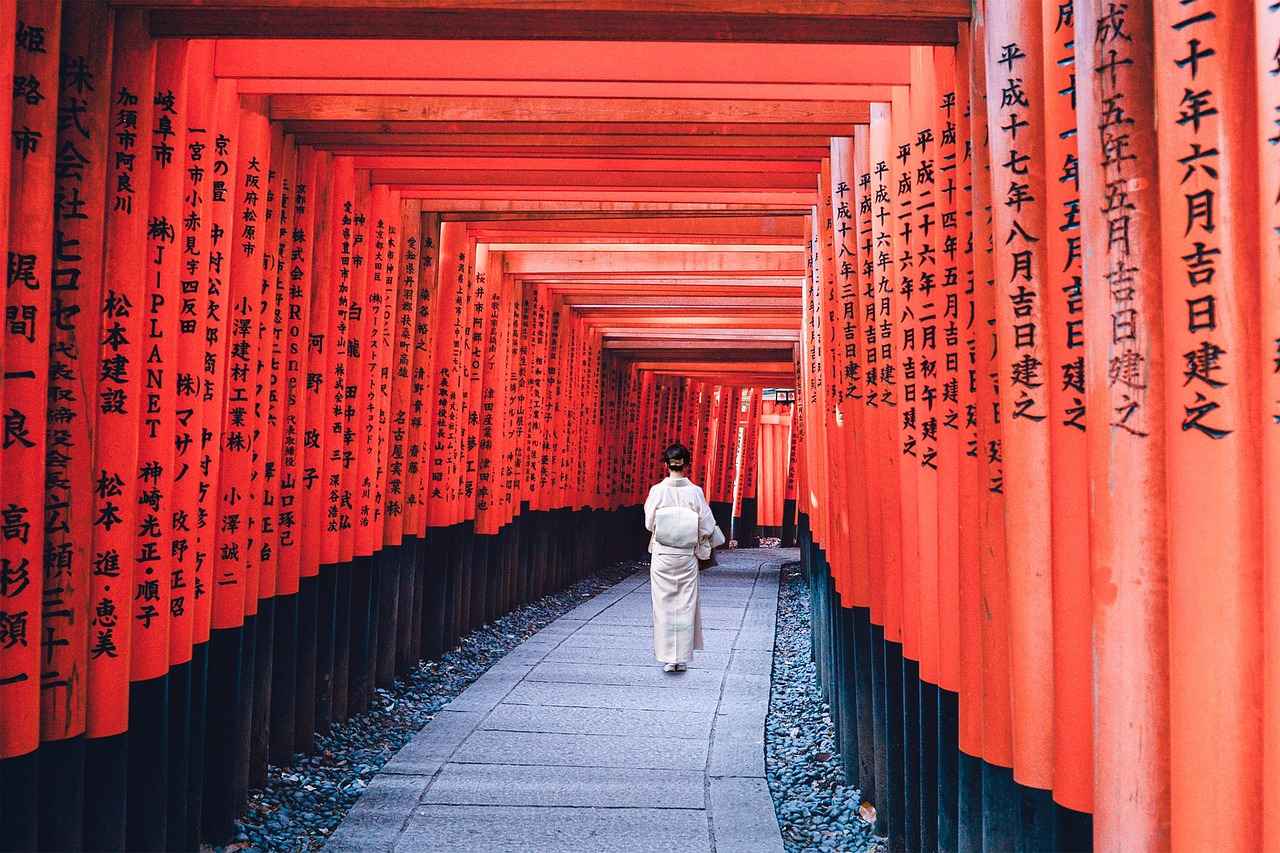
Choosing the Right Fabric
is a crucial step in selecting the perfect kimono. The fabric not only influences the garment’s appearance but also affects its comfort and suitability for different occasions. Here, we will explore various fabrics used in kimono making, highlighting their unique qualities and ideal uses.
| Fabric Type | Characteristics | Best For |
|---|---|---|
| Silk | Luxurious, soft, and has a natural sheen. Often features intricate patterns. | Formal occasions, weddings, and special events. |
| Cotton | Lightweight, breathable, and easy to care for. Available in various colors and patterns. | Casual wear, summer festivals, and everyday use. |
| Polyester | Durable, wrinkle-resistant, and affordable. Mimics the look of silk. | Everyday wear and budget-friendly options. |
| Linen | Highly breathable and lightweight, ideal for hot weather. Has a natural texture. | Casual outings and summer events. |
When selecting a kimono, consider the occasion and climate. For formal events, silk is the traditional choice due to its elegance and beauty. On the other hand, cotton and linen are excellent for casual settings, providing comfort and ease of movement.
Moreover, maintenance is another key factor. Silk kimonos require special care, often needing dry cleaning, while cotton and polyester can be machine washed, making them more practical for everyday use.
Ultimately, understanding the qualities of each fabric will empower you to make an informed decision, ensuring that your kimono not only looks stunning but also feels comfortable and appropriate for your lifestyle.
Silk Kimonos
represent the pinnacle of traditional Japanese attire, combining elegance with a rich cultural heritage. Known for their luxurious softness and radiant sheen, silk kimonos are a favored choice for both formal occasions and special celebrations. However, their beauty comes with specific care requirements and a higher price point, making it essential for potential buyers to understand their unique characteristics.
One of the most appealing aspects of silk kimonos is their breathability, which allows for comfortable wear in various climates. The fabric drapes beautifully, enhancing the overall silhouette of the wearer. Additionally, silk’s natural luster adds a touch of sophistication that is hard to replicate with other materials.
- Care Requirements: Silk kimonos necessitate gentle handling. It is advisable to dry clean them or hand wash with cold water and mild detergent to preserve their texture and color.
- Storage: Proper storage is crucial. Silk should be kept in a cool, dry place, away from direct sunlight to prevent fading and deterioration.
- Cost Consideration: Due to the quality of the material and the craftsmanship involved, silk kimonos are generally more expensive than their cotton counterparts. However, many consider this investment worthwhile for the elegance and longevity of the garment.
For those looking to purchase a silk kimono, it is essential to try on different styles to find the perfect fit. The kimono’s design should complement the wearer’s body shape while allowing for ease of movement. Additionally, selecting a color and pattern that resonates with personal style can enhance the overall experience of wearing this traditional garment.
In conclusion, while silk kimonos require special care and a significant investment, their timeless beauty and cultural significance make them a treasured addition to any wardrobe. Embracing this exquisite fabric allows individuals to connect with a rich tradition while enjoying the elegance that a silk kimono offers.
Cotton Kimonos
are a delightful choice for those looking to embrace traditional Japanese attire while prioritizing comfort and practicality. These garments, akin to yukatas, are crafted from lightweight and breathable cotton fabric, making them an excellent option for warm weather and casual occasions.
One of the standout features of cotton kimonos is their ease of maintenance. Unlike more delicate fabrics, cotton is machine washable and can withstand frequent laundering without losing its charm. This quality makes cotton kimonos particularly appealing for summer festivals and casual outings, where ease of wear is paramount.
Additionally, cotton kimonos come in a variety of designs and colors, allowing wearers to express their personal style while enjoying the comfort of this traditional garment. Whether adorned with floral patterns or minimalist designs, these kimonos can be effortlessly paired with a range of accessories, enhancing their versatility.
Furthermore, the breathability of cotton fabric ensures that wearers stay cool even during the hottest days. This quality is especially beneficial during outdoor events, where comfort is key. The loose-fitting design of cotton kimonos also allows for easy movement, making them suitable for various activities, from attending a summer festival to lounging at home.
In conclusion, cotton kimonos are an ideal choice for anyone looking to blend tradition with modern practicality. Their lightweight nature, ease of care, and stylish versatility make them a must-have in any wardrobe. Whether you’re dressing up for a festival or simply enjoying a sunny day, a cotton kimono offers both comfort and elegance.
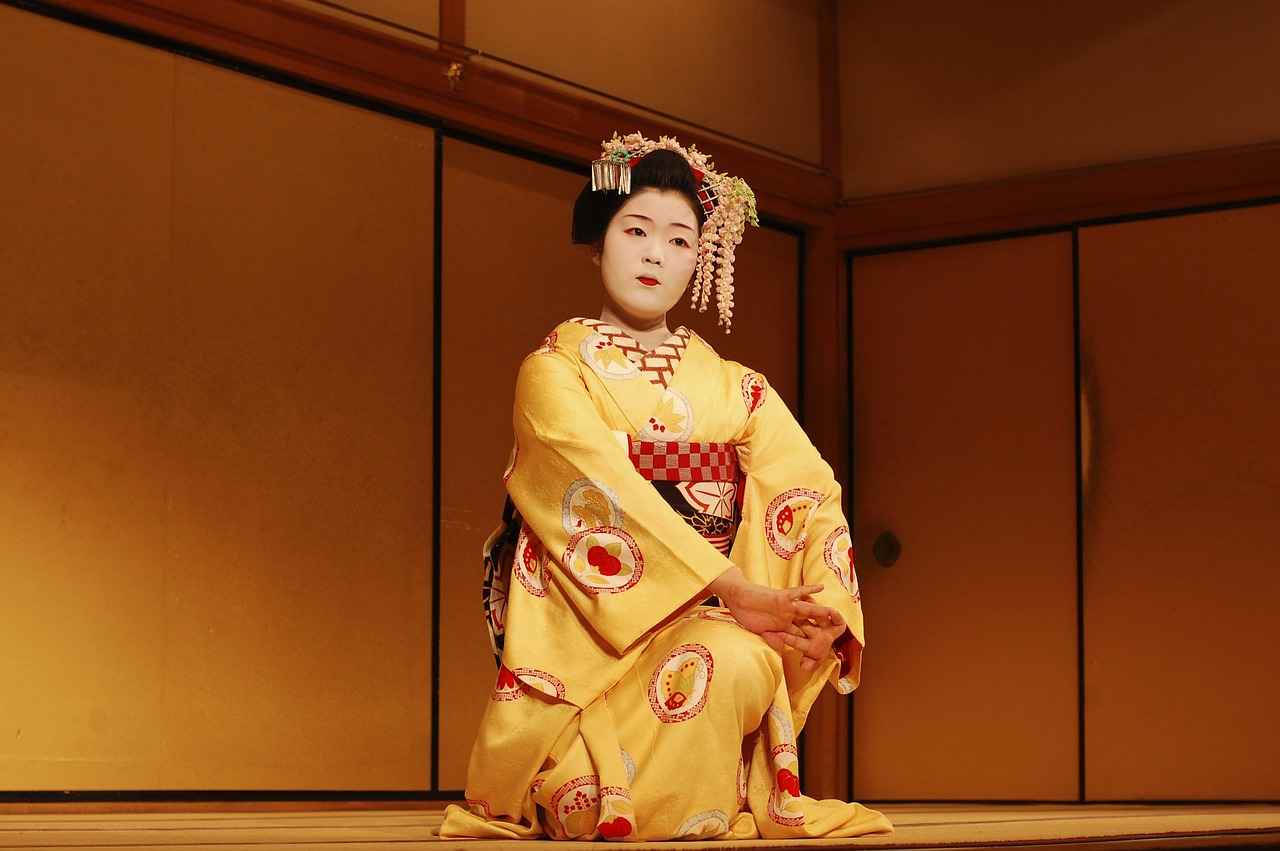
Finding the Right Size
is crucial when it comes to selecting a kimono. The right fit enhances both comfort and appearance, allowing you to fully appreciate this beautiful garment. Understanding the nuances of kimono sizing can greatly impact how the garment flatters your figure.
Kimono sizes can differ significantly from Western clothing sizes, making it essential to measure yourself accurately. Here are some key points to consider:
- Height: Kimonos are often designed with a specific length in mind. Measuring your height will help you find a kimono that falls at the right place, whether you prefer it to touch the floor or sit above it.
- Bust and Waist Measurements: Unlike typical Western garments, kimonos are often more forgiving in fit. However, knowing your bust and waist measurements ensures that the kimono drapes well and feels comfortable.
- Shoulder Width: This measurement can affect how the kimono sits on your body. A well-fitted shoulder area will enhance the overall silhouette.
Once you have your measurements, it’s essential to consult size charts provided by retailers. Kimono sizes can vary widely between brands, so comparing your measurements against these charts is vital. Look for retailers that offer detailed sizing information to make an informed decision.
Additionally, consider the style of the kimono you intend to purchase. Some styles may require a looser fit for traditional purposes, while others might look better with a more tailored appearance. Trying on different styles can help you determine what feels best for your body type.
In conclusion, taking the time to find the right size not only enhances your comfort but also ensures that you can wear your kimono with confidence and grace. With the right fit, you can fully embrace the cultural significance and beauty of this timeless garment.
Measuring Yourself
is a crucial step when it comes to selecting the perfect kimono. Ensuring that your garment fits well not only enhances your appearance but also provides comfort and ease of movement. Here’s a detailed guide to help you take the right measurements for your kimono purchase.
- Height: Stand straight against a wall and measure from the top of your head to the floor. This measurement is essential as kimonos come in different lengths, and your height will help determine the appropriate size.
- Bust: Wrap a measuring tape around the fullest part of your bust, ensuring it is level and not too tight. This measurement is critical for ensuring that the kimono drapes correctly over your body.
- Waist: Measure around your natural waistline, which is typically located just above your belly button. This measurement will help you choose a kimono that fits comfortably around your waist.
Once you have these measurements, it’s advisable to refer to size charts provided by retailers. Kimono sizes can vary significantly between brands, so comparing your measurements against these charts will help you make an informed decision. Additionally, consider the style of kimono you are purchasing, as certain styles may have different fit requirements.
When selecting a kimono, remember that the garment is designed to be worn loosely, allowing for ease of movement. Therefore, while accurate measurements are important, a little extra room can enhance comfort. If you are between sizes, it is often better to opt for the larger size, as kimonos can be adjusted with the obi (belt) for a more tailored look.
In conclusion, taking the time to measure yourself properly will ensure that your kimono fits beautifully, allowing you to fully enjoy this exquisite piece of clothing. Embrace the tradition and elegance that a well-fitted kimono brings!
Kimono Size Charts
Understanding Kimono Size Charts
When it comes to purchasing your first kimono, one of the most critical aspects to consider is the size. Kimonos are unique garments that can vary significantly in size between different brands and styles. Therefore, it is essential to refer to the size charts provided by retailers to ensure a proper fit.
Why Size Charts Matter
Size charts serve as a guide to help you navigate the often-confusing world of kimono sizing. Unlike standard clothing sizes, kimonos are designed to be worn in a specific way, which means that understanding your measurements in relation to the size chart is vital. This can help you avoid the disappointment of receiving a garment that does not fit as expected.
How to Measure Yourself
- Height: Stand straight against a wall and measure from the top of your head to the floor.
- Bust: Measure around the fullest part of your bust while wearing a bra that fits well.
- Waist: Measure around the narrowest part of your waist, usually just above the belly button.
Comparing Measurements
Once you have your measurements, compare them against the size chart provided by the retailer. Each brand may have its own sizing system, so it’s important to take the time to find the right fit. Look for a size that accommodates your measurements while also considering the style of the kimono, as some may have more room than others.
Tips for a Better Fit
- Consider the type of kimono you are buying; some styles may be more forgiving in fit.
- Don’t hesitate to reach out to customer service for assistance if you have questions about sizing.
- Read reviews from previous customers to gain insights into how the kimono fits on different body types.
In conclusion, taking the time to understand kimono size charts and how to measure yourself accurately will lead to a more satisfying purchasing experience. By ensuring that you select the right size, you can enjoy the beauty and elegance of your kimono to the fullest.
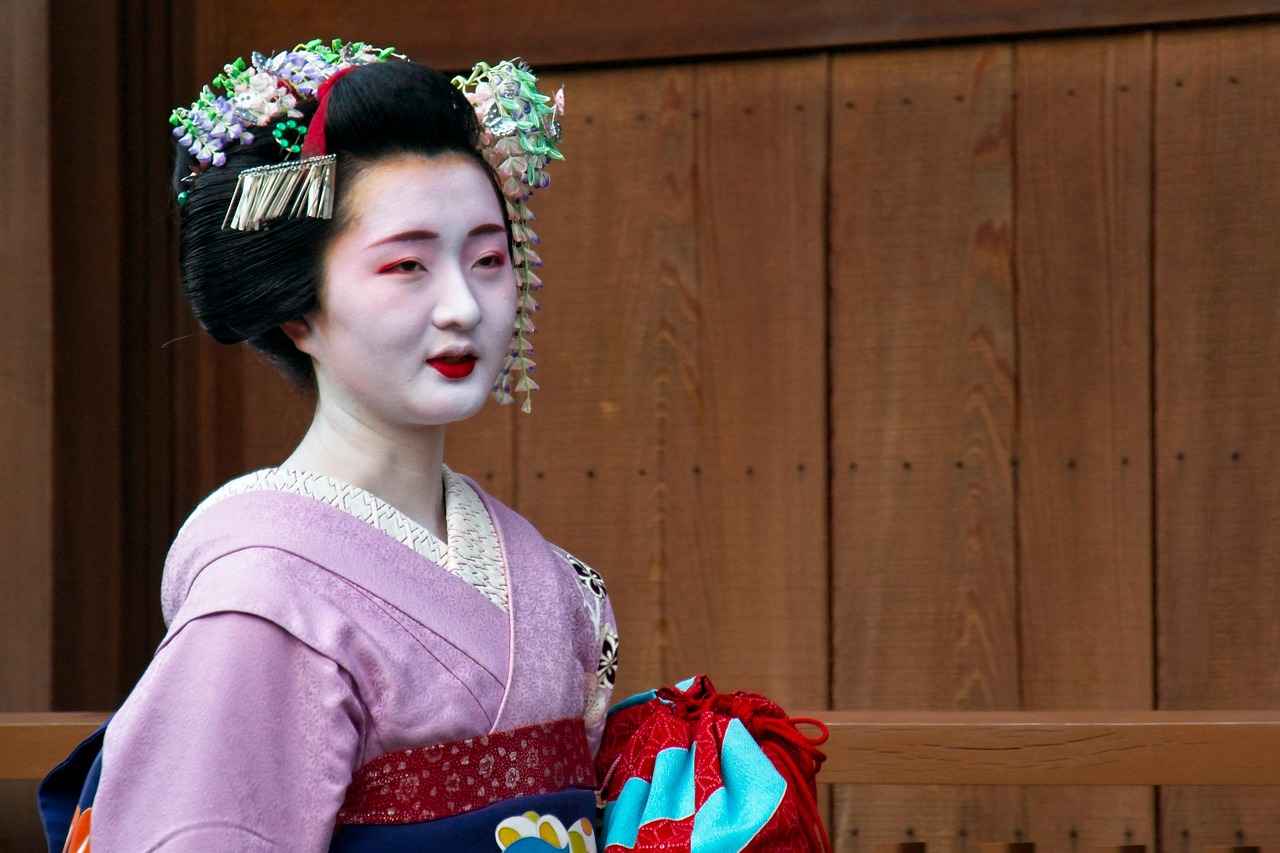
Accessorizing Your Kimono
is an essential aspect that can transform a traditional outfit into a stunning ensemble. The right accessories not only enhance the overall look but also reflect cultural significance and personal style. Here’s a comprehensive guide on how to effectively accessorize your kimono.
- Obi Belts: The obi is a fundamental accessory that secures the kimono and adds a touch of elegance. Available in various styles, colors, and patterns, a well-chosen obi can complement your kimono beautifully. Consider the occasion when selecting the width and design of your obi, as formal events may call for more intricate styles.
- Footwear: Traditional footwear, such as geta or zori, is crucial for completing the kimono look. Geta, with their elevated wooden soles, are often worn during summer festivals, while zori are more suitable for formal occasions. Ensure that your footwear matches the color scheme and formality of your kimono.
- Haori: A haori is a traditional jacket worn over the kimono, providing warmth and an additional layer of style. It can be particularly useful during colder months or evening events. Opt for a haori that complements your kimono, both in color and design.
- Accessories: Adding accessories like kanzashi (hair ornaments) can enhance your hairstyle and overall appearance. Choose pieces that reflect your personality while staying true to traditional designs. Additionally, consider incorporating jewelry that is subtle yet elegant to avoid overwhelming your look.
When accessorizing, it’s important to strike a balance. The goal is to enhance the beauty of your kimono without overshadowing it. Understanding the cultural significance of each accessory will also help you make informed choices that respect the traditions of this beautiful garment.
In conclusion, the right accessories can elevate your kimono outfit, allowing you to express your individuality while honoring a rich cultural heritage. Embrace the art of accessorizing to truly showcase the elegance of your kimono.
Obi Belts
are not just functional accessories; they are a vital part of the kimono ensemble, providing both structure and style. The obi, which translates to “belt” in Japanese, plays a significant role in the overall aesthetic of the kimono. Choosing the right obi can dramatically enhance your outfit, making it essential to understand the different styles, materials, and techniques associated with this important accessory.
The obi comes in various styles, each suited for different occasions and types of kimono. For instance, formal kimonos are often paired with wider and more elaborately designed obis, while casual kimonos may be complemented by simpler, narrower obis. The choice of color and pattern can also influence the overall look, allowing for personal expression and cultural significance.
| Obi Style | Description | Occasions |
|---|---|---|
| Fukuro Obi | A formal, wide obi that is often pre-tied and features intricate designs. | Weddings, formal ceremonies |
| Haneri Obi | A narrow obi that is typically used for casual wear and summer festivals. | Casual outings, festivals |
| Maru Obi | A traditional, formal obi that is fully patterned on both sides, often used for special occasions. | Formal events, tea ceremonies |
When selecting an obi, consider factors such as color, pattern, and material. Silk obis are luxurious and often used for formal events, while cotton obis are more practical for everyday wear. Additionally, the way an obi is tied can also impact the overall look; there are various tying techniques, each with its unique flair.
In conclusion, the obi is an essential element of the kimono wardrobe, offering both functionality and style. By understanding the different types and how to choose the right one, you can elevate your kimono experience, ensuring that each outfit is not only beautiful but also culturally significant.
Footwear and Haori
When it comes to wearing a kimono, accessories play a crucial role in enhancing the overall look and feel of this traditional attire. Among the most significant accessories are the footwear and the haori jacket, both of which serve functional and aesthetic purposes.
| Type | Description |
|---|---|
| Geta | Traditional wooden sandals that elevate the wearer, providing a unique clacking sound as you walk. They are typically worn with formal kimonos. |
| Zori | Flat sandals made from rice straw or synthetic materials, suitable for both casual and formal occasions. They offer comfort and elegance. |
The choice between geta and zori often depends on the type of kimono being worn and the occasion. For instance, geta is often preferred during summer festivals or casual outings, while zori may be chosen for more formal events.
In addition to footwear, the haori jacket adds an extra layer of style and warmth. Traditionally worn over the kimono, the haori is a short jacket that complements the outfit beautifully. It can be made from various fabrics, including silk and cotton, and often features intricate designs that reflect the wearer’s taste.
- Style: A haori can be worn open or tied with a cord, allowing for versatility in styling.
- Seasonal Use: Ideal for cooler weather, the haori provides warmth without compromising the elegance of the kimono.
- Cultural Significance: Wearing a haori signifies respect for tradition and enhances the overall aesthetic of the kimono ensemble.
In conclusion, selecting the right footwear and incorporating a haori jacket are essential steps in completing your kimono look. These elements not only enhance your outfit but also reflect a deep appreciation for Japanese culture and tradition.
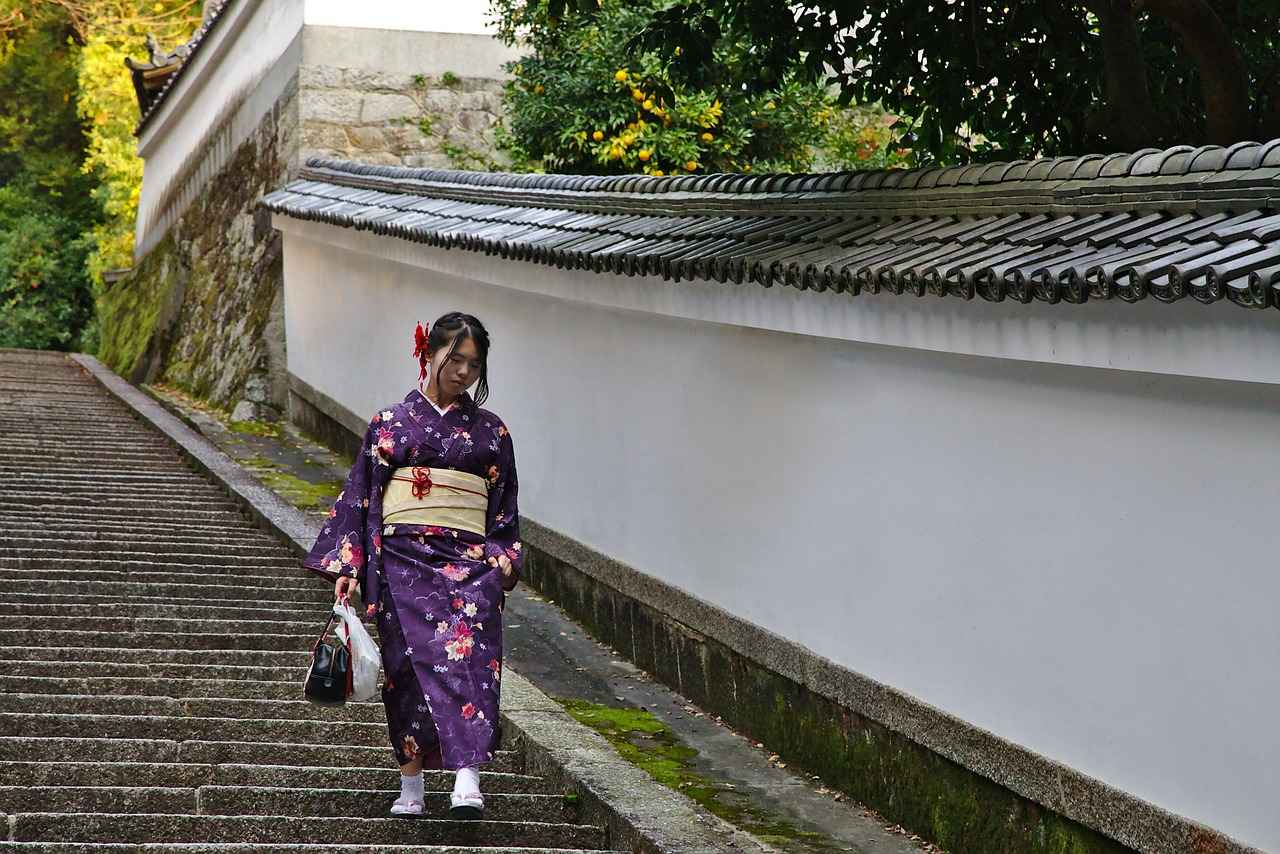
Where to Buy Your Kimono
Finding the right place to purchase your kimono is essential for a satisfying experience. With a variety of options available, you can explore unique selections that cater to your preferences and budget. Here, we will delve into the best places to buy your kimono, ensuring you make an informed decision.
- Local Boutiques: Shopping at local boutiques offers a personalized experience. You can feel the fabric, see the colors in natural light, and try on different styles. Knowledgeable staff can assist you in finding the perfect fit and style that resonates with your personal taste.
- Online Retailers: The convenience of online shopping cannot be overstated. Numerous online retailers specialize in kimonos, providing a vast selection that may not be available locally. When shopping online, read customer reviews and check return policies to ensure you can return or exchange items if they do not meet your expectations.
- Craft Fairs and Markets: Visiting craft fairs and local markets can lead you to unique, handmade kimonos. These events often feature artisans who create one-of-a-kind pieces, allowing you to support local craftspeople while finding a distinctive garment.
- Second-Hand Shops: Thrift stores and vintage shops can be treasure troves for finding affordable kimonos. You may come across vintage styles that add character to your wardrobe. Ensure to check the condition of the fabric and any signs of wear before making a purchase.
- Department Stores: Some department stores carry a selection of kimonos, especially during seasonal sales or special promotions. This option allows you to browse various brands and styles in one location.
In conclusion, whether you choose to shop locally or online, each option offers its own benefits. Exploring different avenues will help you find a kimono that not only fits well but also reflects your personal style and appreciation for this traditional garment.
Local Boutiques
Shopping at local boutiques offers a unique and enriching experience for anyone looking to purchase a kimono. Unlike online shopping, where you can only see limited images, visiting a boutique allows you to experience the fabric and fit firsthand. This tactile interaction is crucial, especially when selecting a garment as delicate and culturally significant as a kimono.
Local boutiques often carry a curated selection of kimonos, showcasing various styles, colors, and fabrics that might not be available in larger retail chains. This personalized shopping experience enables you to discover unique pieces that resonate with your style and preferences.
One of the key advantages of shopping at these boutiques is the knowledgeable staff who are usually well-versed in the history and significance of kimonos. They can provide valuable insights and recommendations based on your body type, style preferences, and the occasion for which you are buying the kimono. This kind of guidance is particularly helpful for first-time buyers who may feel overwhelmed by the options available.
Moreover, trying on different kimonos in a boutique allows you to assess the fit and comfort of each garment. You can move around, sit, and see how the kimono drapes on your body, ensuring that you make a well-informed decision. This hands-on approach also helps you avoid the hassle of returns and exchanges that often come with online purchases.
In conclusion, shopping at local boutiques not only enhances your understanding of kimonos but also supports small businesses in your community. By choosing to shop locally, you’re investing in a more personalized and enriching experience that celebrates the beauty of this traditional garment.
Online Retailers
have transformed the way we shop for kimonos, providing a level of convenience and variety that traditional stores may not offer. With just a few clicks, you can explore a vast selection of kimonos from the comfort of your home. However, navigating the online shopping landscape requires careful consideration to ensure a satisfying purchase experience.
When shopping online for kimonos, it’s essential to keep in mind the following tips:
- Read Customer Reviews: Reviews from previous buyers can provide valuable insights into the quality and fit of the kimono. Look for patterns in feedback regarding sizing, fabric quality, and overall satisfaction.
- Check Return Policies: Before finalizing your purchase, ensure that the retailer has a clear and fair return policy. This is particularly important for kimonos, as sizing can vary significantly between brands.
- Examine Size Charts: Always refer to the size chart provided by the retailer. Kimonos often have unique sizing, and measuring yourself against these charts can help you make an informed choice.
- Look for Quality Materials: Pay attention to the fabric description. High-quality fabrics such as silk and cotton will enhance the overall look and comfort of your kimono.
- Explore Different Styles: Online retailers usually offer a wider range of styles than local shops. Take your time to explore various options, from casual yukatas to formal furisodes.
Additionally, many online stores offer detailed product descriptions and images, allowing you to visualize how the kimono will look. Make sure to take advantage of these resources to ensure your purchase aligns with your expectations.
In conclusion, while online shopping for kimonos is incredibly convenient, it’s crucial to approach it with a discerning eye. By reading reviews, checking return policies, and understanding sizing, you can confidently select a kimono that meets your needs and enhances your wardrobe.
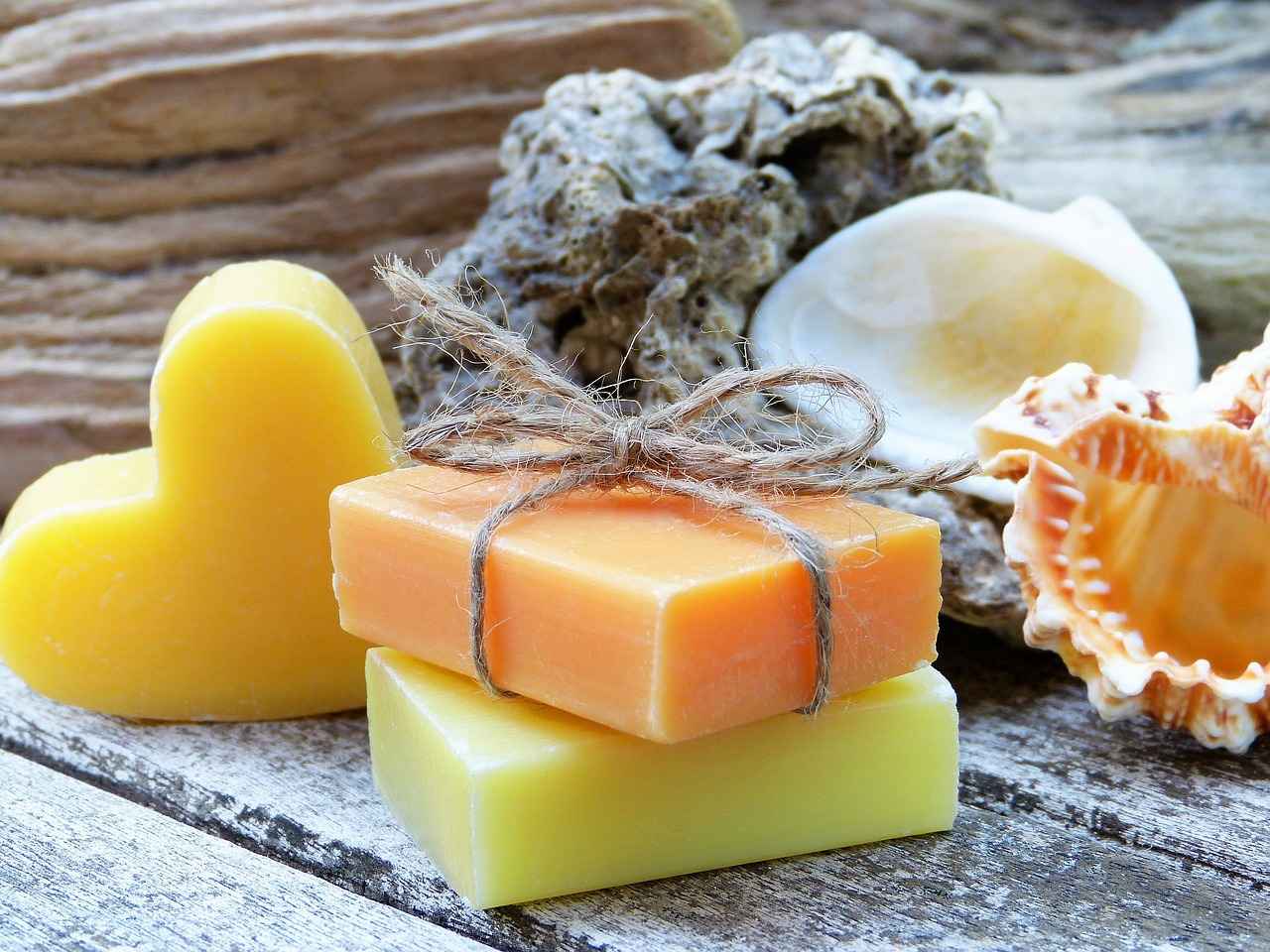
Caring for Your Kimono
Proper care is essential for maintaining the beauty and longevity of your kimono. This traditional garment is not only a symbol of Japanese culture but also a valuable investment. Understanding the right cleaning and storage methods will help preserve your kimono for years to come.
Cleaning Methods
- Dry Cleaning: For silk kimonos and other delicate fabrics, it is advisable to use professional dry cleaning services. This method helps maintain the integrity of the fabric and prevents damage.
- Hand Washing: If your kimono is made of cotton or a durable fabric, gentle hand washing is an option. Use cold water and mild detergent, and avoid wringing the fabric to prevent creasing.
- Spot Cleaning: For minor stains, consider spot cleaning with a damp cloth. This method is less invasive and helps maintain the overall appearance of the garment.
Storage Tips
- Use Breathable Garment Bags: When storing your kimono, opt for breathable garment bags made from cotton or linen. Avoid plastic bags, as they can trap moisture and lead to mold.
- Avoid Direct Sunlight: Store your kimono in a cool, dark place to prevent fading and deterioration caused by UV rays.
- Keep it Unfolded: Whenever possible, hang your kimono on a padded hanger to avoid creases. If folding is necessary, use acid-free tissue paper to cushion the folds.
Conclusion
By following these proper care techniques, you can ensure that your kimono remains a stunning piece of cultural heritage for many years. Investing time in its maintenance will allow you to enjoy the beauty and elegance of this traditional attire for generations to come.
Cleaning Methods
for Kimonos
When it comes to maintaining the beauty and longevity of your kimono, understanding the appropriate cleaning methods is essential. Kimonos are often made from delicate fabrics that require special attention. Here are some key points to consider:
- Fabric Type Matters: The cleaning method you choose largely depends on the fabric of your kimono. For instance, silk kimonos, known for their luxurious feel, typically require dry cleaning to preserve their texture and sheen. On the other hand, cotton kimonos, such as yukatas, can often be gently hand washed.
- Follow Care Instructions: Always refer to the care label attached to your kimono. This label provides specific instructions tailored to the fabric’s needs. Ignoring these guidelines may result in irreparable damage.
- Gentle Hand Washing: If your kimono is suitable for hand washing, fill a basin with cold water and add a mild detergent. Submerge the kimono and gently agitate the water. Avoid scrubbing or twisting the fabric, as this can lead to stretching or tearing.
- Drying Techniques: After washing, lay your kimono flat on a clean, dry towel to absorb excess water. Avoid wringing it out. Once most of the moisture is removed, hang it to dry away from direct sunlight to prevent fading.
- Professional Cleaning: For intricate designs or older kimonos, consider seeking professional cleaning services. Experts can handle delicate materials and ensure your kimono is cleaned without damage.
By following these cleaning methods, you can maintain the integrity and beauty of your kimono for years to come. Remember, proper care is not just about cleanliness; it’s about preserving a piece of cultural heritage.
Storage Tips
Properly storing your kimono is essential to maintain its beauty and longevity. By following a few simple guidelines, you can prevent wrinkles, damage, and fading, ensuring that your kimono remains in pristine condition for years to come.
- Use a Breathable Garment Bag: Always store your kimono in a breathable garment bag made of natural fibers, such as cotton. This allows air circulation, preventing moisture buildup and mildew, which can damage the fabric.
- Avoid Direct Sunlight: Sunlight can cause colors to fade and weaken the fabric over time. Store your kimono in a cool, dark place, away from direct sunlight to preserve its vibrant colors and intricate designs.
- Fold with Care: When folding your kimono, make sure to do so gently to avoid creases. Use acid-free tissue paper to cushion the folds, which helps prevent permanent wrinkles and maintains the garment’s shape.
- Regularly Inspect: Periodically check your stored kimono for any signs of damage or pests. Early detection can prevent small issues from becoming larger problems, preserving the integrity of your garment.
- Climate Control: If possible, store your kimono in a climate-controlled environment. Extreme temperatures and humidity can adversely affect the fabric, leading to deterioration.
By implementing these storage tips, you can ensure that your kimono remains a cherished piece of your wardrobe, ready to be worn for special occasions or cultural celebrations.

Conclusion: Embracing the Kimono Culture
Purchasing your first kimono transcends mere fashion; it is a meaningful journey into the heart of a rich cultural heritage. This traditional Japanese garment, with its stunning designs and intricate patterns, represents centuries of history and artistry. By understanding the significance of the kimono, you not only celebrate its beauty but also honor the traditions that have shaped its existence.
As you embark on this journey, remember that choosing the right kimono involves several important factors. Familiarizing yourself with the various styles—from formal kimonos like the furisode to casual options such as the yukata—ensures that you select a garment suitable for your occasion. The fabric choice, whether luxurious silk or breathable cotton, affects not only the look but also your comfort.
Additionally, understanding size is crucial for achieving the perfect fit. Take the time to measure yourself accurately and consult size charts to avoid any disappointments. Once you’ve found the ideal kimono, accessorizing it properly will enhance your overall appearance. The right obi belt and traditional footwear can elevate your outfit, allowing you to step out in style.
Finally, caring for your kimono is essential to preserve its beauty and longevity. Follow proper cleaning and storage methods to ensure that your garment remains in pristine condition for years to come. By embracing the kimono culture, you are not just wearing a piece of clothing; you are participating in a time-honored tradition that connects you to a broader community and history.
In conclusion, your first kimono is not just a purchase, but a celebration of Japanese culture. With the right knowledge and care, you can wear your kimono with pride, fully appreciating the artistry and significance behind this beautiful garment.
Frequently Asked Questions
- What is the best fabric for a beginner’s kimono?
If you’re just starting out, cotton kimonos, like yukatas, are a fantastic choice. They’re lightweight, breathable, and easy to care for, making them perfect for casual outings and summer festivals.
- How do I choose the right size kimono?
To find the perfect fit, measure your height, bust, and waist. Use these measurements to consult size charts provided by retailers, as kimono sizes can vary between brands.
- Can I wear a kimono for casual occasions?
Absolutely! Casual kimonos, such as yukatas, are designed for everyday wear and are perfect for casual events, festivals, or even lounging at home.
- How do I accessorize my kimono?
Accessorizing is key! A stylish obi belt will secure your kimono and add flair. Don’t forget traditional footwear like geta or zori, and consider layering with a haori jacket for extra style and warmth.
- What’s the best way to care for my kimono?
Proper care is essential! Depending on the fabric, you may need to dry clean or gently hand wash your kimono. Always store it in a breathable garment bag away from direct sunlight to keep it looking pristine.
